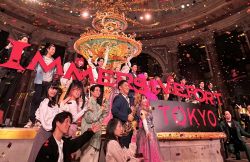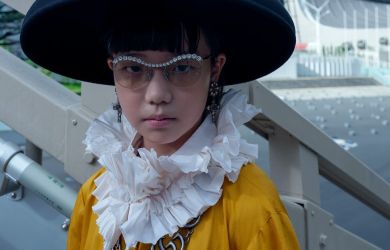
Originally published on metropolis.co.jp on March 2013

If an NHK educational program that seeks to spur creativity is such a hit, why not do it as an exhibition? That seems to be the thinking behind “Design Ah!” the latest exhibition at 21_21 Design Sight, that bunker of design located in the parkland behind Roppongi’s Tokyo Midtown building.
You probably remember how, as a kid, you were really, really interested in how things worked, and, like me, you may even have, ahem, “disassembled” a few household items without permission, just to see how they worked or, following disassembly, didn’t work. The urge to understand how things work and fit together is very much part of childhood, but it is also exactly the same instinct that good designers have.
This exhibition, which features works and installations by 12 top designers and “creatives” (yes, I imagine a guy in skinny jeans and a beret, too), seeks to explore the eureka moment of inspiration and in the process to demystify the role of the designer. “Yes, kids, you can all be designers, too,” the show seems to be saying, “Now, return to your schools, kindergartens, and playgrounds, and start designing.”
Behind it all, as with a lot of exhibitions at 21_21, seems to be the belief that with enough great design Japan can finally pull itself out of 20 sluggish years of flat-lining economic growth. If that’s the case, hiding it in a stylish bunker under Roppongi may not be the way to go, as most of the visitors, when I was in attendance, seemed to be design students—who have hopefully gone beyond breaking their dads’ old radios.
Another trait of exhibitions at 21_21 recently seems to be meticulous and rather nerdy layouts featuring lots of slightly different sizes or versions of particular objects. This seems “designed” (pun intended) to appeal more to the train-spotterly sensibilities of design students, who can obviously find rich worlds and complex meanings in different sizes of soy sauce dispenser, rather than to the great art-hungry public.
There is some attempt to initiate a hands-on experience—necessary if they are going to appeal, at least in theory, to young minds and the juvenile propensity to grab things. Furoshiki, named after the multi-purpose Japanese cloth that can be folded to serve different purposes, is a video installation with step-by-step instructions on how to wrap these versatile cloths around various objects. There is also a similar video dealing with origami.
Those with less nimble fingers will find solace in a large motion capture projection that takes its input from whatever pose you strike. This technology has popped up in quite a few exhibitions in recent years and is never quite as exciting as the first time you encounter it.
Despite a buzz of gentle humor, the exhibition seems a little twee for Western sensibilities. I also suspect it won’t really inspire the very young, especially boys. An elementary school kid probably wants to know how to design and build rocket ships and robots. This exhibition, by contrast, crushes his planet-conquering dreams and tells him he’ll have to make do with designing typefaces or folding pieces of paper.





